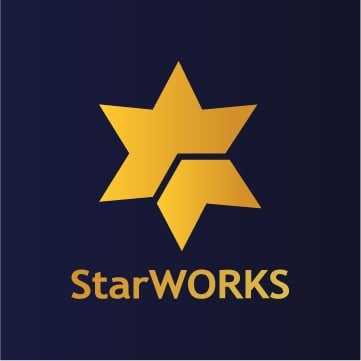Illustration of Trading in Binance, photo on Pexels
The Binance Smart Chain (BSC) has rapidly emerged as one of the leading blockchain networks in the cryptocurrency ecosystem, offering an efficient and cost-effective platform for decentralized finance (DeFi) applications, non-fungible tokens (NFTs), and other decentralized applications (DApps). Launched by Binance, one of the largest cryptocurrency exchanges globally, BSC provides a dual-chain architecture that bridges with Binance Chain to support high-performance trading while enabling the development of scalable and decentralized applications. This article delves into the fundamentals of Binance Smart Chain, exploring its structure, functionality, and the types of tokens it supports.
An Introduction to Binance Smart Chain
Binance Smart Chain (BSC) is a blockchain network designed to run parallel to Binance Chain, ensuring fast transactions and providing a space for the development of decentralized applications. While Binance Chain was created primarily for efficient trading, BSC was developed to add smart contract functionality to the Binance ecosystem, which is essential for DApps and DeFi.
BSC operates as a dual-chain system with Binance Chain, allowing users to transfer assets seamlessly between the two chains. This interoperability feature is crucial for developers who want to leverage Binance Chain's speed and BSC's smart contract capabilities. Additionally, BSC is compatible with the Ethereum Virtual Machine (EVM), making it easier for developers to port their Ethereum DApps to BSC without much modification. This compatibility has significantly contributed to BSC's rapid adoption within the crypto community.
How Does Binance Smart Chain Work?
Binance Smart Chain functions as a standalone blockchain network but is intricately designed to complement Binance Chain. The dual-chain architecture allows for the seamless movement of assets between the two chains, enhancing the overall functionality of the Binance ecosystem. BSC's primary innovation is its support for smart contracts, enabling the development and execution of decentralized applications.
BSC's architecture is built around the Ethereum Virtual Machine (EVM), ensuring full compatibility with Ethereum-based DApps and tools. This EVM compatibility means that developers can deploy their Ethereum contracts on BSC with minimal changes, broadening the ecosystem's appeal and driving rapid adoption.
Moreover, BSC is designed to be highly scalable, capable of handling large volumes of transactions without compromising speed or efficiency. This scalability is achieved through its unique consensus mechanism, Proof of Stake Authority (PoSA), which allows BSC to process transactions quickly and at a lower cost than many other blockchain networks.
Proof of Stake Authority

Illustration of Proof of Stake, photo by rawpixel on Freepik
At the core of Binance Smart Chain's efficiency is its consensus mechanism, Proof of Stake Authority (PoSA). PoSA is a hybrid model that combines the best aspects of Proof of Stake (PoS) and Proof of Authority (PoA). This mechanism allows for faster block times and lower transaction fees while maintaining a high level of security and decentralization.
In the PoSA model, validators on the network are chosen based on their staked BNB (Binance Coin) and their reputation within the network. These validators are responsible for confirming transactions, adding new blocks to the blockchain, and ensuring the network's overall security. Validators are rewarded with transaction fees and block rewards in BNB, incentivizing them to act in the network's best interests.
One of PoSA's key advantages is its ability to process transactions quickly and efficiently. Unlike traditional Proof of Work (PoW) mechanisms, which require significant computational power and energy, PoSA relies on validators who have a vested interest in maintaining the network's integrity. This results in a more energy-efficient and cost-effective network that can handle large transaction volumes, making it ideal for DeFi applications and other high-frequency use cases.
Supported Tokens on Binance Smart Chain (BSC)
Binance Smart Chain supports a wide variety of tokens, offering flexibility for developers and users alike. The most prominent token standard on BSC is BEP-20, which is similar to Ethereum's ERC-20 standard. BEP-20 tokens are fungible tokens representing various assets, from stablecoins to utility tokens, within the BSC ecosystem.
In addition to BEP-20 tokens, BSC also supports BEP-2 tokens, which are native to Binance Chain. BEP-2 tokens can be easily swapped for BEP-20 tokens, allowing for seamless interoperability between Binance Chain and BSC. This flexibility has made BSC popular for developers looking to create and launch their tokens, particularly in the DeFi space.
Another significant category of tokens on BSC is non-fungible tokens (NFTs). These unique digital assets have gained massive popularity, especially in the art, gaming, and entertainment industries. BSC supports NFT standards, enabling the creation and trading of NFTs within its ecosystem. The low transaction fees and high-speed processing on BSC have attracted numerous NFT projects, making it a competitive platform in the burgeoning NFT market.
Conclusion
Binance Smart Chain has established itself as a robust and scalable blockchain network that offers unique advantages, particularly in terms of transaction speed, cost efficiency, and compatibility with existing Ethereum tools and DApps. Its innovative consensus mechanism, Proof of Stake Authority, ensures that the network remains secure while processing transactions efficiently.
Additionally, the wide range of supported tokens, including BEP-20, BEP-2, and NFTs, provides developers with the flexibility to create and deploy a diverse array of applications. As the blockchain landscape continues to evolve, BSC's role in driving innovation and adoption in the crypto space is likely to grow even further.




